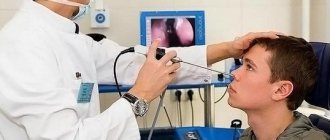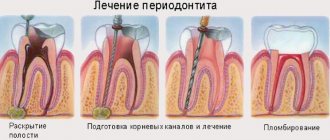Forms of dyslalia
- Monomorphic (simple) - one sound or several sounds from one group suffers (S-Z-C or Sh-Z-H)
- Polymorphic (complex) - several sounds from different groups suffer (S-R-K-SH)
- Physiological (age-related) - disturbances in sound pronunciation up to 5 years, caused by insufficient development of articulation organs. After 5 years it goes away on its own. This is the only form of dyslalia that is present in all people at a certain stage of development.
- Functional - a violation of sound pronunciation in the absence of deviations in the articulatory apparatus and the functioning of the central nervous system, auditory and peripheral articulatory apparatus.
- Organic (mechanical) - caused by hereditary, congenital or acquired anatomical defects of the peripheral articulatory apparatus.
Diagnosis of dyslalia
A diagnostic examination of speech for dyslalia begins with clarifying the characteristics of pregnancy and childbirth in the mother, past illnesses in the child, early psychomotor and speech development, the state of biological hearing and vision, and the musculoskeletal system (according to medical documentation). Then the speech therapist proceeds to study the structure and mobility of the organs of the articulatory apparatus through visual inspection and evaluation of the performance of a series of imitation exercises.
The actual diagnosis of oral speech in dyslalia includes examination of the state of sound pronunciation and identification of defectively pronounced sounds using appropriate didactic material. During the speech therapy examination, the nature of the disorder is revealed (absence, replacement, confusion, distortion of sounds) in various positions - in isolation, in syllables (open, closed, with a consonant cluster), words (at the beginning, middle, end), phrases, texts. Then the state of phonemic hearing is checked - the ability to auditory differentiate all correlating phonemes.
The speech therapy report reflects the form of dyslalia (mechanical or functional), the type of dyslalia (articulatory-phonemic, acoustic-phonemic, articulatory-phonetic), and the type of incorrect sound pronunciation (rhotacism, sigmatism, etc.). With mechanical dyslalia, the child may need to consult a dentist (dental surgeon, orthodontist); for functional dyslalia - a pediatric neurologist. To exclude hearing loss, a pediatric otolaryngologist is consulted and the function of the hearing analyzer is examined. Differential diagnosis of dyslalia, first of all, should be carried out with erased dysarthria.
Causes of functional dyslalia
- Somatic - physical and neurological weakness due to long-term chronic diseases of the body (indigestion, frequent colds).
- Social:
- Pedagogical neglect (parents do not correct deficiencies in their children’s speech and do not demonstrate examples of correct sound pronunciation).
- Bilingualism in the family (parents speak different languages, the child inserts another into one language. For example, French + Russian = throat sound “R”).
- A sample of incorrect speech in a child’s environment (by imitation).
- Choosing the wrong articulation.
- Underdevelopment of phonemic hearing. Physical hearing may be preserved, but phonemic hearing may be impaired.
What is dyslalia
Dyslalia is a pathology that is associated with incorrect reproduction of sounds in the presence of normal hearing and innervation of the articulatory apparatus. The main risk group is children of preschool and primary school age. The causes of the disease will differ depending on its type, but the underlying factors are abnormalities in the structure of the tongue, lips, teeth or jaws, as well as the influence of social factors.
- Etiology
- Classification
- Symptoms
- Diagnostics
- Treatment
- Prevention
This disease is characterized by the absence of sounds, their replacement, confusion or distortion during pronunciation. This can further lead to problems with writing, as well as the development of dysphagia or dyslexia.
Establishing a correct diagnosis requires consulting a large number of specialists from various fields of medicine. Laboratory and instrumental diagnostic measures are not provided.
Treatment of pathology consists of several stages, which is why it takes a lot of time and requires serious work not only by the doctor, but also by the little patient.
In the International Classification of Diseases, Tenth Revision, such a disorder falls into the category of “specific disorders of the development of speech and language” - ICD-10 code - F80.
Manifestations
Dyslalia can manifest itself in the form of:
- The most common are violations of the pronunciation of whistling and hissing sounds
(sigmatism) or their difficulty in pronunciation (parasigmatism). Among them are purely phonetic sigmatisms (interdental, lateral, labial-dental, buccal, etc.) and parasigmatisms (dental, whistling, hissing, etc.).
- violations of the pronunciation of sonorant sounds
p, рь, l, l, are represented by two groups that have independent terminological design.
- violations of the pronunciation of sonorant sounds
l, l, - lambdaism and paralambdaism.
- violations of the pronunciation of the sonorant sound
“R” (рь) - rhotacism and pararotacism. The colloquial “burr” is a violation of the pronunciation of the sound [r], replacing it with the uvular [ʁ], [ɣ] or even the glottal stop [ʔ]. As a rule, burr in most cases is not a congenital speech defect. The implementation of the phoneme /r/ as [ʁ] in many languages (for example, French, German) is a norm or a variant of the norm.
- violations of the pronunciation of the back-lingual sounds
g, g', k, k', x, x' - have their own names, respectively, gammacism, kappacism, hitism. Some authors combine them into one group “Gammacism” or “Hottentotism”.
- violation of the sound “th”
is called iotacism.
Violations of other consonant sounds are rare:
- voiced defects
- a disorder of sound pronunciation: replacement of voiced consonants with voiceless ones or their confusion [1. With. 126].
- softness defects
- a disorder of sound pronunciation: replacing soft consonants with hard ones or mixing them [1. With. 126].
In speech therapy, for more accurate recording in the speech map, the following designations are used: “Greek. letter name + suffix -ism
" for violations of sound pronunciations and "
pair
+ Greek.
name of the letter + suffix -ism
"to denote a defect manifested in the replacement of one sound with another.
Manifestations of dyslalia are also called sound pronunciation defects.
. In addition to dyslalia, sound pronunciation defects include dysarthria and rhinolalia.
Sensory dyslalia (sensory tongue-tiedness) is a consequence of dysfunction of the hearing aid.
Age-related developmental features include incorrect pronunciation of certain sounds before the period of replacement of milk teeth with permanent ones - milk tongue-tiedness.
Correction of dyslalia
Work on the correction of dyslalia is structured in accordance with three stages of work: preparatory, the stage of formation of primary pronunciation skills and the stage of formation of communication skills.
In case of mechanical dyslalia, at the preparatory stage it is necessary to eliminate anatomical defects in the structure of the articulatory apparatus (plasty of the frenulum of the tongue or upper lip, a course of orthodontic treatment). With motor functional dyslalia, speech motor skills are developed during the preparatory period (articulation gymnastics, speech therapy massage); with sensory functional dyslalia – the development of phonemic processes. Also important for correct sound pronunciation is the formation of a directed air stream, the development of fine motor skills, and practicing the pronunciation of reference sounds.
The stage of formation of primary pronunciation skills in dyslalia includes the production of an isolated sound (by imitation, with mechanical assistance, i.e., using speech therapy probes or a mixed method); automation of sound in syllables, words, sentences and texts and differentiation of sounds (when they are mixed).
At the final stage of dyslalia correction, skills are formed to accurately use practiced sounds in all communication situations.
Speech therapy classes for the correction of dyslalia should be conducted regularly, at least 3 times a week. It is important that speech therapist tasks and articulation gymnastics are also performed at home. The duration of classes for simple dyslalia is from 1 to 3 months; for complex dyslalia – 3-6 months.
Varieties of dyslalia
Incorrect pronunciation can be observed in relation to any consonant sound, but those sounds that are simple in the method of articulation and do not require additional movements of the tongue, for example m, n, t, p, are less likely to be disrupted.
Most often, the pronunciation of sounds that are difficult to articulate is impaired : lingual sounds , for example r, l , whistling sounds ( s, z, z)
and
hissing (sh, zh, ch, shch)
Usually hard and soft pairs of consonants are violated to the same extent. For example, if a child incorrectly pronounces the sounds s, z,
then their soft pairs, i.e.
c'
and
z
', also turn out to be defective.
The exception is the sounds r
and
l
. Soft pairs of these consonants are most often pronounced correctly, since they are simpler in their method of articulation than their hard variants.
Violations of sound pronunciation in children can manifest themselves either in the absence of certain sounds, or in their distortion, or in substitutions.
Let's consider each of these cases in detail. The absence of a sound in speech can be expressed in its loss at the beginning of a word (for example, instead of fish
the child says “yba”), in the middle
(parokhod
- “paokhod”) and at the end
(ball
- “sha”).
Sound distortion is expressed in the fact that instead of the correct one, a sound is pronounced that is not in the phonetic system of the Russian language. For example, velar p,
when the thin edge of the soft palate vibrates, or the uvular
p,
when the small uvula vibrates, interdental
c,
lateral w, bilabial
l
, etc.
The sound can be replaced by another sound available in the phonetic system of the language.
These replacements can be as follows:
1) replacement of sounds that are identical in the method of formation and differ in the place of articulation, for example, the replacement of plosive back-lingual k and g with plosive front-lingual t
and
d
(“tulak” instead of
fist,
“dudok” instead of
beep
, etc.);
2) replacement of sounds that are identical in place of articulation and differ in the method of formation , for example, a fricative anterior lingual with
anterior lingual explosive
t
(“tanks” instead of
sleds)
;
3) replacement of sounds that are identical in the method of formation and differ in the participation of organs of articulation , for example with
labiodental
f
(“fumka” instead of
bag
, etc.);
4) replacement of sounds that are identical in place and method of formation and differ in the participation of the voice , for example, voiced sounds with voiceless sounds (“pulka” instead of roll,
"subs" instead of teeth);
5) replacement of sounds that are identical in the method of formation and in the active organ of articulation and differ in terms of hardness and softness, for example, soft with hard and hard with soft (“ryaz” instead of times,
"pula" instead of
saw).
Based on the number of disrupted sounds, dyslalia is divided into simple and complex . If there are up to four defective sounds in the pronunciation, this is simple dyslalia, if there are five sounds or more, this is complex dyslalia.
If the defect is expressed in a violation of the pronunciation of sounds of one articulatory group (for example, whistling), it is monomorphic dyslalia. If it extends to two or more articulatory groups (for example, rhotacism, sigmatism and lambdacism), it is polymorphic dyslalia.
In accordance with the nature of the pronunciation defect related to a certain group of sounds, the following types of dyslalia are distinguished:
1 . Sigmatism (from the name of the Greek letter sigma,
denoting the sound
s)
- deficiencies in the pronunciation of whistling
(s, s', z, z', c)
and hissing
(sh, zh, h, sch)
sounds. One of the most common types of pronunciation disorders.
2. Rotacism (from the name of the Greek letter rho,
denoting the sound
p)
- shortcomings in the pronunciation of the sounds
p
and
p'.
3. Lambdacism (from the name of the Greek letter lambda,
denoting the sound
l)
- shortcomings in the pronunciation of the sounds
l
and
l'.
4. Defects in the pronunciation of palatal sounds: kappacism - sounds to
and
k', gammacism - the sounds g
and
g', hitism - the sounds x
and
x', yotacism - the sound y
(from the names of the Greek letters
kappa, gamma, chi, iota,
respectively denoting the sounds
k, g, x, and).
5. Voicing defects - deficiencies in the pronunciation of voiced consonant sounds. These defects are expressed in the replacement of voiced consonant sounds with paired unvoiced sounds: b-p, d-t, v-f, z-s, zh-sh, g-k
etc.
This deficiency is common in children suffering from hearing loss.
6. Mitigation defects - deficiencies in the pronunciation of soft consonant sounds, consisting mainly of replacing them with paired hard ones, for example d'-d, p'-p, k'-k, r'-r
etc.
The only exceptions are the sounds sh, zh, ts,
not having soft pairs, and the sounds
ch, sch, and,
which are always pronounced softly and do not have hard pairs.











